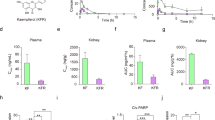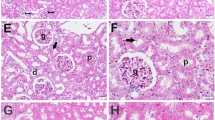Abstract
Quercetin (QC), a polyphenolic compound widely distributed in fruits and vegetables has recently gained interest due to its cisplatin (CP) sensitizing properties in cancer cells. It is currently unknown, whether quercetin also increases the susceptibility of the kidneys to cisplatin toxicity. We studied the effects of various bioflavonoids on CP toxicity in an in vitro model of cultured tubular epithelial cells (LLC-PK1). Viability of LLC-PK1 cells, as assessed by lactate dehydrogenase (LDH) release and MTT-test, was affected by CP (100–400 μM) in a time and dose dependent fashion. Pretreatment of cells with QC for 3 h significantly reduced the extent of cell damage. The protective activity of QC was concentration dependent, starting at 10–25 μM and reaching a plateau between 50 and 100 μM. Other bioflavonoids (catechin, silibinin, rutin) did not diminish cellular injury, even at higher concentrations (100–500 μM). Quercetin itself showed some intrinsic cytotoxicity at concentrations exceeding 75 μM. Our data indicate that quercetin reduces cisplatin toxicity in cultured tubular epithelial cells. The exact mechanism of protection is unclear, though scavenging of free oxygen radicals may play an important role.
Similar content being viewed by others
Author information
Authors and Affiliations
Additional information
Received: 26 January 1998 / Accepted: 16 March 1998
Rights and permissions
About this article
Cite this article
Kuhlmann, M., Horsch, E., Burkhardt, G. et al. Reduction of cisplatin toxicity in cultured renal tubular cells by the bioflavonoid quercetin. Arch Toxicol 72, 536–540 (1998). https://doi.org/10.1007/s002040050539
Issue Date:
DOI: https://doi.org/10.1007/s002040050539




